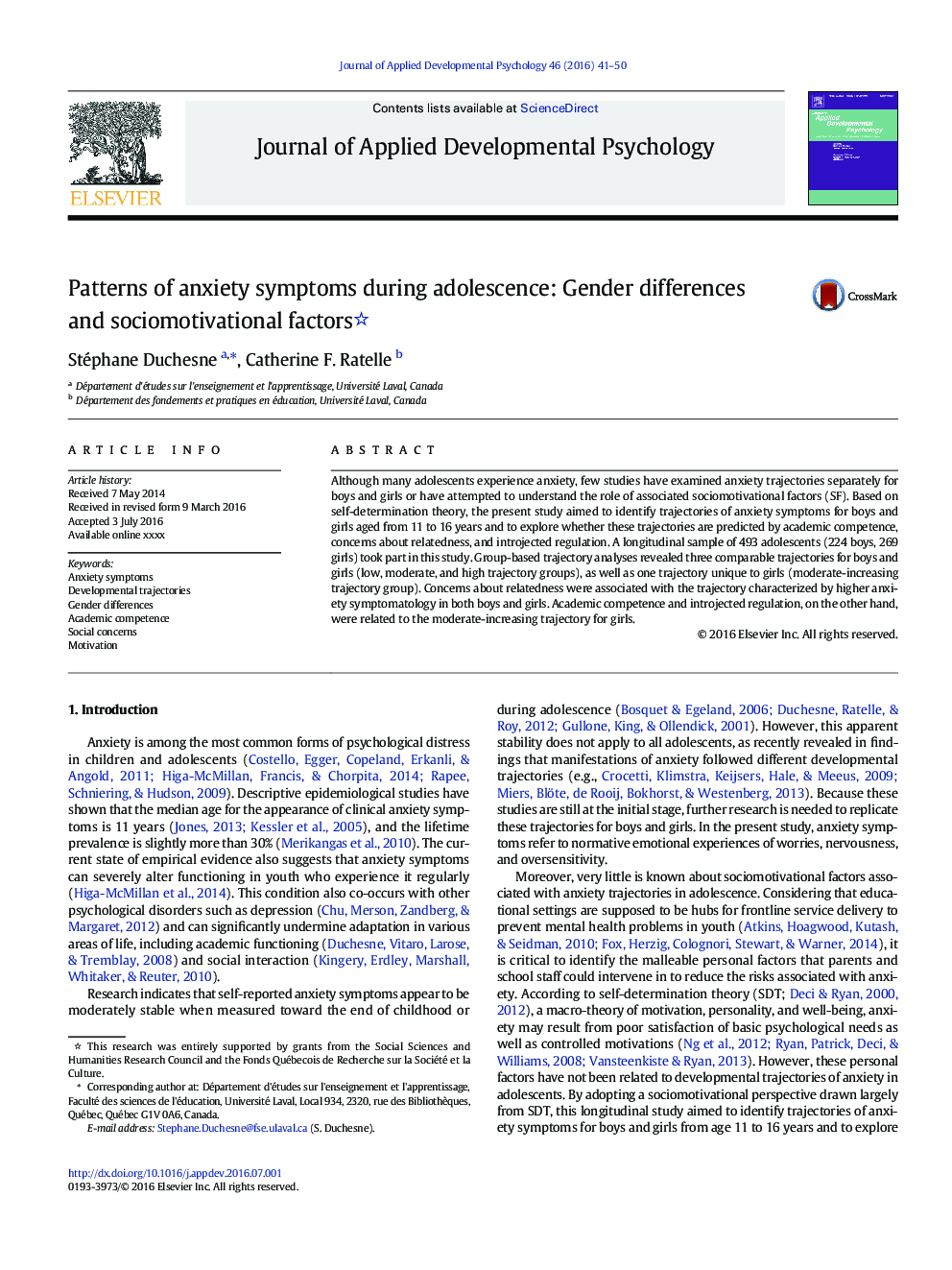| کد مقاله | کد نشریه | سال انتشار | مقاله انگلیسی | نسخه تمام متن |
|---|---|---|---|---|
| 359585 | 620256 | 2016 | 10 صفحه PDF | دانلود رایگان |
• Longitudinal sample: 493 adolescents with six waves between age 11 to 16 years
• Three comparable trajectory patterns were found for boys and girls.
• A subgroup of girls reported anxiety symptoms that increased over time.
• Sociomotivational factors emerged as determinants for these developmental patterns.
• Findings have implications for the design of preventive interventions in school.
Although many adolescents experience anxiety, few studies have examined anxiety trajectories separately for boys and girls or have attempted to understand the role of associated sociomotivational factors (SF). Based on self-determination theory, the present study aimed to identify trajectories of anxiety symptoms for boys and girls aged from 11 to 16 years and to explore whether these trajectories are predicted by academic competence, concerns about relatedness, and introjected regulation. A longitudinal sample of 493 adolescents (224 boys, 269 girls) took part in this study. Group-based trajectory analyses revealed three comparable trajectories for boys and girls (low, moderate, and high trajectory groups), as well as one trajectory unique to girls (moderate-increasing trajectory group). Concerns about relatedness were associated with the trajectory characterized by higher anxiety symptomatology in both boys and girls. Academic competence and introjected regulation, on the other hand, were related to the moderate-increasing trajectory for girls.
Journal: Journal of Applied Developmental Psychology - Volume 46, September–October 2016, Pages 41–50
